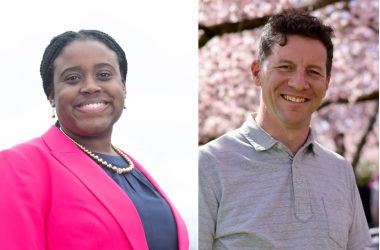Over a decade ago, when the city of Salem first collaborated with the University of Oregon for its Sustainable City Year Program, a small group of students brainstormed ways to turn waste into energy, and identified businesses that could be used as sources.
“At the last minute we were just like, ‘let’s throw in Willow Lake and just see,’” said Courtney Knox Bush, the city’s strategic initiatives manager.
That decision, she said, eventually turned into the city’s Willow Lake Cogeneration Facility that opened in 2020. The facility generates enough energy from by-products of wastewater treatment to power 814 homes while reducing carbon emissions.
It’s one of several projects serving Salemites that was workshopped in a classroom.
This year, the University of Oregon has again selected Salem as its partner for the program, which allows students to apply their studies of architecture, planning, public administration, journalism and geography to real city projects.
Megan Banks, the program’s director at the university, said that Salem is the first city they’ve returned to in its 14 year history partnering with Oregon cities. She said Salem’s plans and proposed opportunities for student learning cover a wide range of disciplines.
“As the state capital, as the second largest city in Oregon, there are aspects of Salem that I think for our students just are magnified in a lot of ways,” she said. “The potential for a partnership is their breadth of everything they’re trying to accomplish – it’s astounding, actually, in a lot of ways.”
This coming school year, students from up to 20 courses will work on projects to help implement the city’s climate action plan, make the city operations fee more equitable, improve community engagement and help design infrastructure for future construction.
The partnership was boosted by a $150,000 grant from the federal Department of Education, secured by Senators Ron Wyden, Jeff Merkley and former Congressman Peter DeFazio. The city is spending $150,000 to match the grant.
The funds pay to support the program, with a base fee per class based on how many hours of work students will put in. One student from each class will be paid to make a final report of their plans, Knox Bush said.
Each year, students in the program address planning, business, design and policy issues brought forward by their partner community. The program works with cities throughout the state, and has previously tackled projects in Eugene, Silverton and Sisters.
For the Salem partnership, the city put forward their major goals of climate action and equity and provided options for planned projects. From there, the university program looked for planned classes that matched their needs.
This year, students taking Community-Engaged Architecture will work to advance city plans for a network of resiliency hubs for Salemites – places people can shelter during extreme heat or cold. The city is looking to reimagine existing community spaces, like churches and community centers, and incorporate them into a network of climate respite sites and food banks.
The city is also looking for students to give input as it updates its 25-year-old software that collects the operations fee, which shows up on city utility bills.
Residents are categorized as either single-family, who pay $14.43 per month, or multi-family, paying $11.54, with discounts for low-income people over 60 or people with disabilities. Knox Bush said the current organization of customer classes is limited by the system.
“We think the students can help us understand how to apply equity within that structure,” Knox Bush said. Students taking Public Budgeting will be considering the topic during class.
Architecture and planning students will also get involved in upcoming infrastructure projects, by considering mixed use building designs for the branch libraries and low-income housing to be built by infrastructure bond funding. Students will also help conduct a walkability assessment, looking for ways to improve pedestrian safety in Salem.
Students in journalism courses will look into where Salemites get their information, and how to get people more involved in the community through volunteering.
At the end of it, Knox Bush would like students to present their findings in an official setting, like an advisory board or commission, that they can add to their resume.
During the 2011 session, students brought their ideas to city planning at Willow Lake, streetlight maintenance and plans for redeveloping Northeast Front Street downtown.
Since then, Banks and Knox Bush have kept in touch hoping to collaborate again but not finding the right time. They said the federal funding this year made it possible.
“We are ecstatic that this came together,” Banks said. “And being able to work with Salem is kind of a dream come true again.”
Knox Bush said the student work will advance council and community priorities faster than the city could do it on its own. As someone who previously studied public policy in college, she’s happy to help students apply their learning.
“To me, it’s just so powerful from all perspectives. The community wins, the students win and the city just advances further,” she said. “So I think it’s fabulous.”
Contact reporter Abbey McDonald: [email protected] or 503-704-0355.
SUPPORT OUR WORK – We depend on subscribers for resources to report on Salem with care and depth, fairness and accuracy. Subscribe today to get our daily newsletters and more. Click I want to subscribe!
Abbey McDonald joined the Salem Reporter in 2022. She previously worked as the business reporter at The Astorian, where she covered labor issues, health care and social services. A University of Oregon grad, she has also reported for the Malheur Enterprise, The News-Review and Willamette Week.









